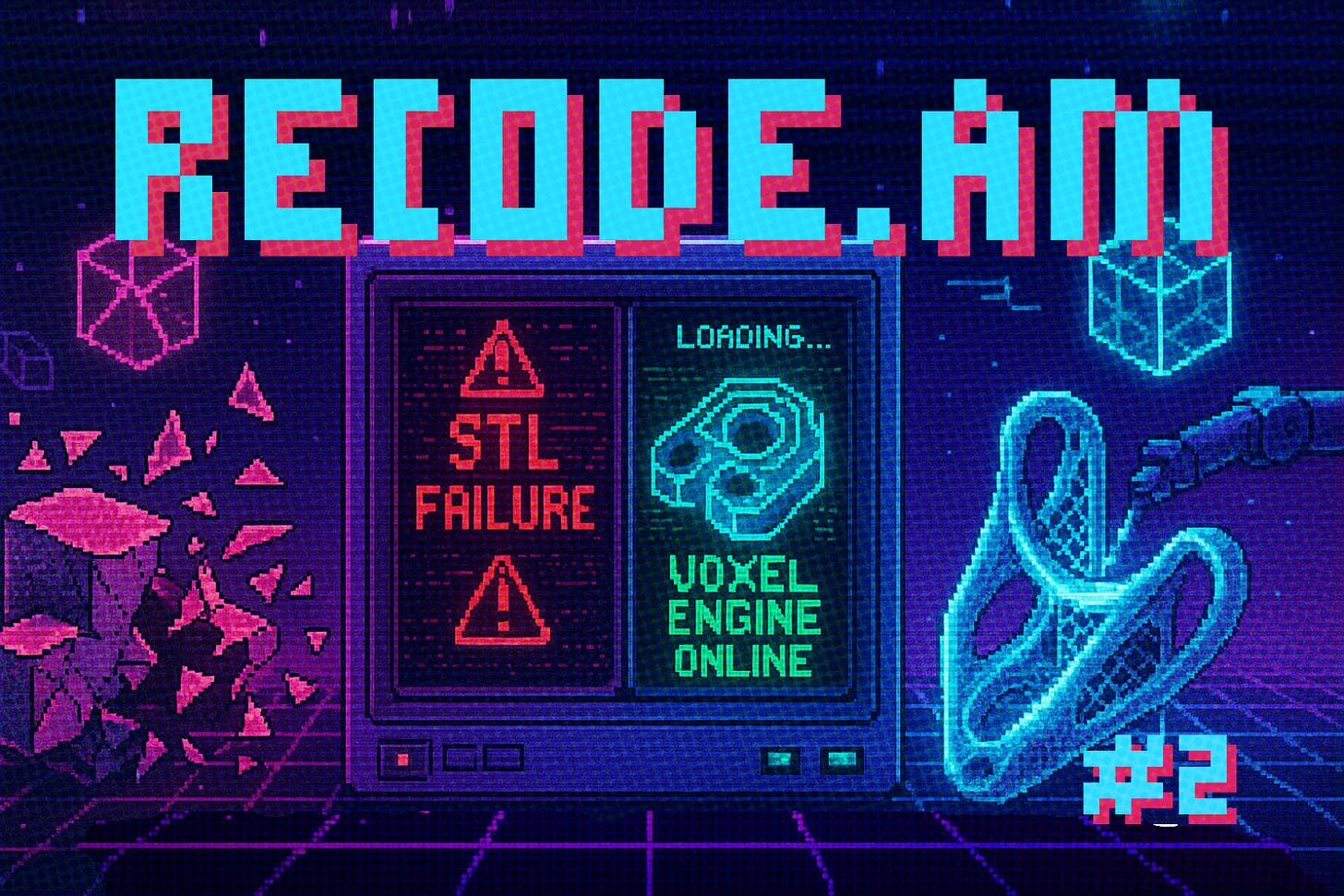The myth of mesh: why polygon-based workflows are failing metal AM
RECODE.AM #2
Polygonal mesh models have long been the backbone of 3D printing workflows. Their simplicity and compatibility with early slicers made them the de facto standard, particularly in the form of STL files.
I described it in detail in the article below:
However, something that worked brilliantly in the 1980s and 1990s is no longer sufficient in the context of modern industrial metal additive manufacturing. The triangle mesh stored in an STL file was perfectly adequate for rapid prototyping, but today it actively limits quality, repeatability, and scalability at the production level.
At the core of the problem is the fundamental nature of polygonal meshes. A mesh made up of thousands (or sometimes millions) of triangles is a static, non-parametric representation of geometry.
It strips away design intent, feature history, and precise mathematical description. Curves are approximated, sharp features are dulled, and critical engineering information is lost.
This might be acceptable for rapid polymer prototyping, but when it comes to manufacturing aerospace- or medical-grade metal parts, such inaccuracy introduces serious risk and is simply unacceptable.
Where human safety is involved, the rule is simple: if a given application or manufacturing method is flawed — don’t use it.
Conversion errors only deepen the issue. A typical workflow converts CAD into STL or another mesh-based format, which may then undergo multiple iterations of repair, transformation, and slicing.
Each step increases the chance of introducing errors: overlapping faces, non-manifold edges, inverted normals. Attempting to reverse-engineer such models back into usable CAD form is, at best, inefficient — at worst, impossible.
This lack of a solid feedback loop between design and production hinders agility and innovation.
Most importantly, mesh-based workflows are not scalable. Industrial metal AM requires adaptive, programmable manufacturing strategies that respond to geometry, thermal conditions, and performance requirements in real time. Polygonal meshes, devoid of metadata and structure, cannot support automation or optimization at this level.
They are blunt tools in a world that demands surgical precision.
How can this dilemma be resolved?
By introducing a new paradigm: voxel- and kernel-based workflows…
Instead of approximating geometry, these methods preserve it natively. A geometry kernel, such as that employed by Dyndrite, treats parts as precise, mathematical constructs. Features are retained. Design intent is accessible. Parametric edits can be applied dynamically.
And because the geometry is defined algorithmically, it can be manipulated, analyzed, and processed programmatically.
In Dyndrite's approach, geometry is handled via a hybrid model that leverages voxelization, procedural definition, and GPU-accelerated computation. This allows manufacturers to apply toolpath strategies based on actual design features, not post-conversion approximations.
Support structures, scan paths, and energy inputs can be modulated according to curvature, wall thickness, or stress zones. All of this can be done programmatically, reducing human error and accelerating iteration cycles.
While Dyndrite is not the only platform pushing beyond the mesh, it exemplifies the kind of shift necessary for metal AM to reach maturity. Its geometry kernel allows for high-fidelity builds, reduced preprocessing times, and scalable automation.
These advantages are not just technical niceties; they are prerequisites for cost-effective production in metal AM.
The industry must recognize that continuing to rely on polygonal meshes is holding it back. Meshes were a clever solution for a different era. For metal AM to fulfill its potential, we must adopt workflows that reflect the complexity and precision of the parts we intend to produce. Geometry-aware, programmable systems are the future. It's time to move past the myth of mesh.






Completely applicable to Raster based technologies as well as vector (pixel vs laser). Dyndrite could literally power a lights out factory full of disparate technologies.
It just needs someone with the vision to do it.
Poke your heads up out of your day job and look at what you could be doing!
Totally agree Pawel